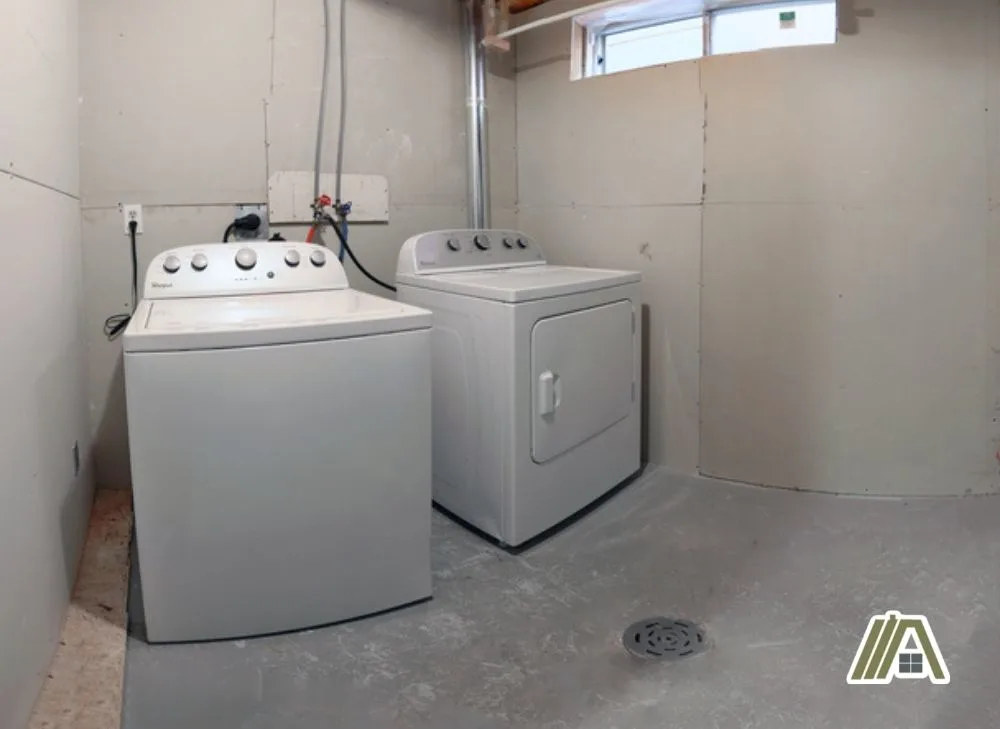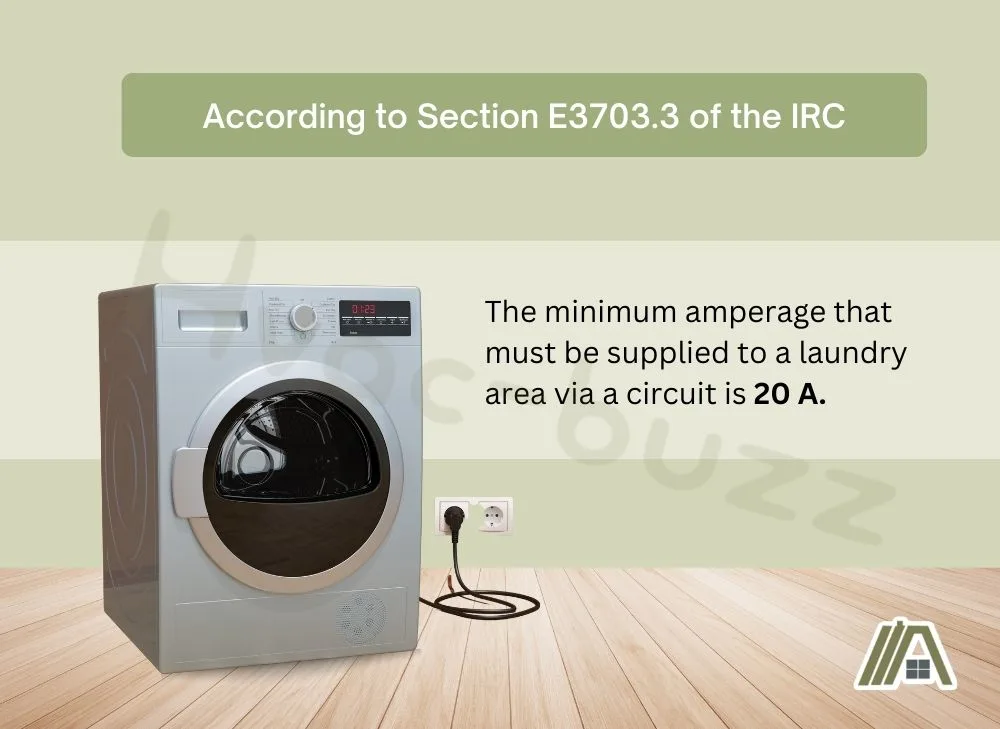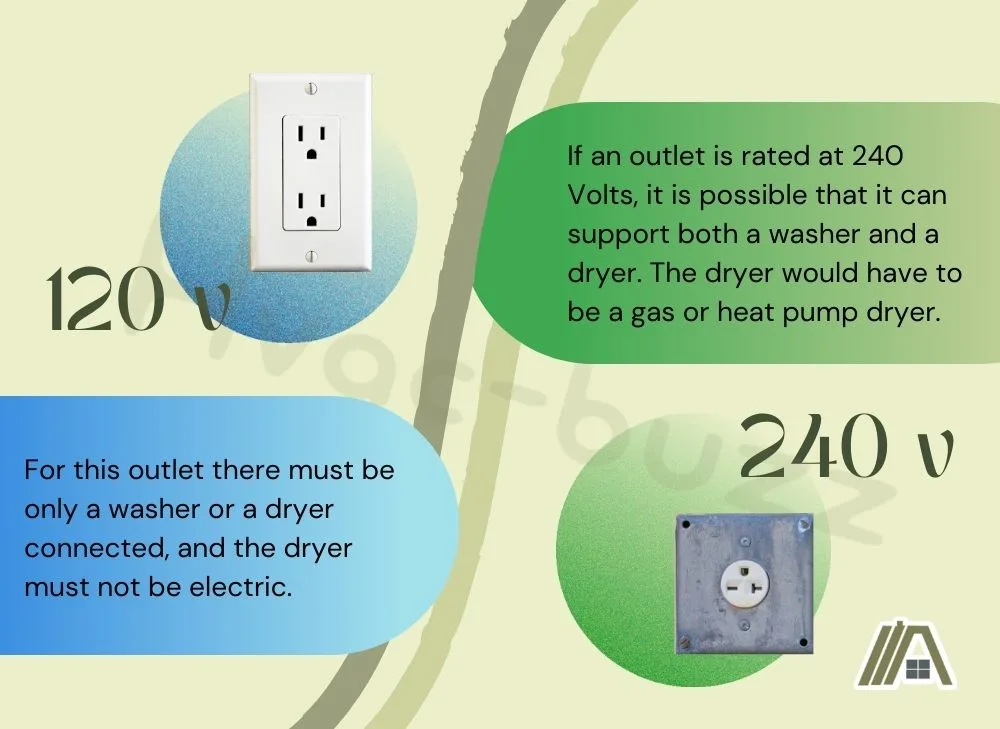Oftentimes, when presented with a power strip filled to maximum capacity and more (adapters upon adapters), one can be pretty sure that there is too great an electrical demand for that circuit or outlet. However, there are some cases when just two appliances connected to one circuit can be too much.
Before deciding whether a washer and dryer can be on the same circuit, different types of washers and electrical washers must be evaluated for their required power. In order to comply with legal requirements, the International Residential Code (IRC) must also be consulted.

Laundry circuits are typically rated at 20 A. Gas dryers are rated at ±4 A, electric dryers at ±30 A, heat pump dryers at ±15 A, and washers at ±15 A. This means that a washer cannot share a circuit with an electric dryer or a heat pump dryer, but it might be able to share a circuit with a gas dryer.
Power Pulled by Dryers
Gas Dryers
While the name can be misleading, gas dryers still require electricity to run. The gas is only used to heat the air.
Gas dryers often use 4-10 amps (A) of electricity. Although, most often, it will use an amperage on the lower end of the spectrum—so about 4 A.
Gas dryer voltage ranges from 110 to 240 volts (V). The most common voltage is on the lower side at 120 V.
In terms of power, gas dryer requirements range from 440 to 2400 Watts (W). Most often, they draw around 480 W.

Electric Dryers
Electric dryers rely completely on electricity, and the heating elements actually draw almost as much power as the rest of the functions on the machine combined. As such, these models use more electricity than their gas counterparts.
As far as amperage, most electric dryers use between 7 and 30 A. Most commonly, an electric dryer will use about 30 A.
Electric dryers have the same voltage range as gas dryers—100-240 V. However, you are far more likely to have an electric dryer rated at 240 V.
The power draw for electric dryers ranges between 1800-7200 W. Although the wattages can get high, the most common wattage for electric dryers is 2100 W.
Heat Pump Dryers
Heat pump dryers have a very different heating mechanism to gas and electric dryers, but their electrical requirements don’t seem to be wildly divergent.
On average, a heat pump dryer uses between 15 and 30 A of electricity. The most common amperage is often 15 A.
Heat pump dryers’ voltage ranges from 120 to 240 V. Commonly, a heat pump dryer only needs 120 V of electricity.
Wattages for heat pump dryers range between 1800 and 7200 W. Most often, only 1800 W of power are needed.
Washer Power Draw
Most washing machines use only 5 to 15 A of electricity. The most common amperage is 15 A.
Washer voltage can range from 120 to 240 V. Like gas and heat pump dryers, the majority of washers tend to use 120 V.
The wattage of a common washer ranges from 400 to 1800 W. The most common wattage is 1800 W.
Required Laundry Room Circuit Amperage
According to Section E3703.3 of the IRC, the minimum amperage that must be supplied to a laundry area via a circuit is 20 A.

This section of the IRC also states that this circuit must not supply electricity to any other device besides laundry-related machines, such as washers and dryers.
The specification of 20 A is set in place because most dryers, excluding electric dryers, and washers don’t need more than this for them to function properly.
Although some can run when supplied with 15 A circuits, a 20 A minimum ensures that the laundry appliance doesn’t draw more than what is supplied, giving the appliance some leeway.
Can Dryer and Washer Both Be on This Circuit?
Because an electric dryer often demands more than 20 A of electricity, it may need a higher-rated branch circuit to supply the dryer with enough electricity.
Since a 20 A branch circuit may not be enough for an electric dryer, it is certainly not enough for an electric dryer and a washer, which would demand another 15 A.
For gas dryers, since they commonly use 4 A and washers use 15 A, they can technically be on the same circuit but if the demand spiked for either, this could cause problems.
Heat pump dryers, on the other hand, can draw up to 15 A and washers do the same. A total of 30 A being demanded of a 20 A circuit cannot be done safely.
What About the Outlets?
Outlets are rated at either 120 V or 240 V.
Since each of the laundry appliances mentioned above use at least 120 V, a single outlet rated at 120 V cannot supply enough electricity to both a washer and a dryer. It may not even be sufficient for the dryer if it is an electric model.
Therefore, for a 120 V outlet, there must be only a washer or a dryer connected, and the dryer must not be electric.
However, if an outlet is rated at 240 Volts, it is possible that it can support both a washer and a dryer. The dryer would have to be a gas or heat pump dryer.

As long as each laundry appliance hooked up to a 240 V outlet uses 120 V or less, the outlet will be able to handle this demand.
How to Determine Outlet Voltage
Although many of us have gone through life knowing we must not stick things into outlets, in order to find your outlet voltage, you will have to do so.
To do this, the only tool you need is a voltmeter (amazon link).
With most electrical projects, the power must be turned off to ensure that you aren’t electrocuted. However, for this one, the power must be on in order for the voltmeter to test the voltage.
Because there is an active current in the outlet, be sure to hold both meter probes in the same hand so that the current doesn’t run through your entire body.
The rest should be simple.
Stick one meter probe into the left slot of the outlet and the other meter probe into the right slot of the outlet.
The reading should be between 120 and 240 V.
Risks of Overloading the Circuit
When a circuit is overloaded, or electrical devices connected to a circuit are demanding too many amps, it is common for the circuit breaker to trip.
The function of a breaker tripping is to cut off the power supply before electrical fires or electrical shocks can occur.
The warning signs of an overloaded circuit include scorched outlets, buzzing noises coming from outlets or switches, a burning smell coming from outlets or switches, and a lack of power to electrical appliances.
These warning signs appear when a circuit is close to overloading. They are signs that a harmful electrical shock or a fire may occur soon.
Thankfully, the circuit breaker should trip when a circuit is overloaded to stop any harmful events from happening.
However, circuit breakers can fail, so it’s best to make sure you are not pushing the limits of an individual circuit.
Sources
https://www.conserve-energy-future.com/how-many-amps-does-dryer-use.php
https://www.whirlpool.ca/en_ca/blog/washers-and-dryers/how-many-kwh-does-a-dryer-use.html
https://www.wirechiefelectric.com/overloaded-circuit-signs-avoid

